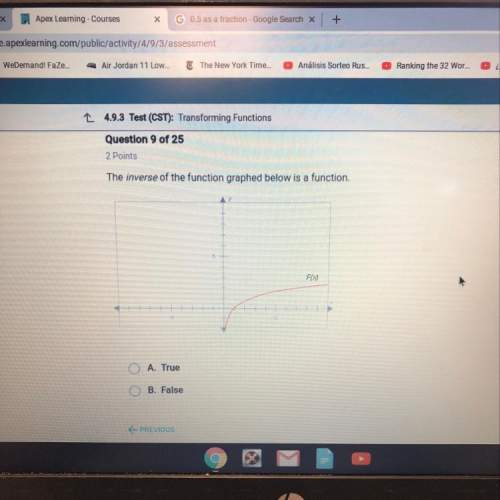
Mathematics, 03.12.2021 20:50 kadrian12
A number is equal to twice a smaller number plus 3. The same number is equal to twice the sum of the smaller
number and 1. How many solutions are possible for this situation?
Infinitely many solutions exist because the two situations describe the same line.
O Exactly one solution exists because the situation describes two lines that have different slopes and differenty-
intercepts.
O No solutions exist because the situation describes two lines that have the same slope and different y-intercepts.
Exactly one solution exists because the situation describes two lines with different slopes and the same y-
intercept

Answers: 2


Other questions on the subject: Mathematics

Mathematics, 21.06.2019 14:40, cassiemyers60
Given the statements, "a square root of 16 is 4," and "a square root of 9 is -3," complete the following blanks with the correct truth-values. p is and q is , so the statement, "a square root of 16 is 4 or a square root of 9 is -3" is .
Answers: 3

Mathematics, 21.06.2019 17:00, carebear147
You have a 32-foot fence around a square garden. there are 4 equal sections. you paint 13 of one section of the fence. what fraction of the fence did you paint? you have a 32-foot fence around a square garden. there are 4 equal sections. you paint 13 of one section of the fence. what fraction of the fence did you paint?
Answers: 2

Mathematics, 21.06.2019 17:00, aminamuhammad11
Suppose i flip two identical coins. what is the probability that i get one head and one tail?
Answers: 2
You know the right answer?
A number is equal to twice a smaller number plus 3. The same number is equal to twice the sum of the...
Questions in other subjects:


Biology, 02.09.2019 05:00

Mathematics, 02.09.2019 05:00


World Languages, 02.09.2019 05:00

Physics, 02.09.2019 05:00



History, 02.09.2019 05:00




